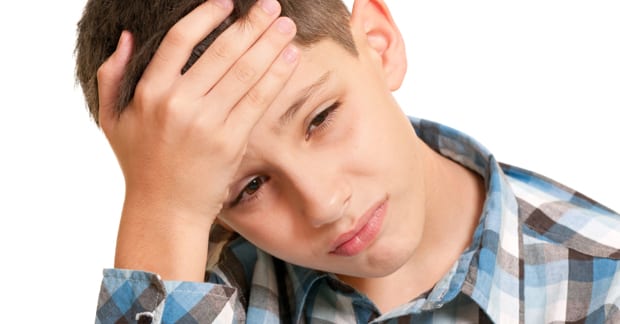Ouch! Did you know that 96% of children experienced some acute pain in the previous month? Headache, at 78%, is the most common type of pain reported. You may not have even known that your child was experiencing pain. Sometimes children will show behavioral changes rather than complain of head pain. One study tested parents’ knowledge of headache vs. the children’s recollection. The children reported headache about 57.6% of the time for the previous month. Mothers, and especially fathers, tended to underestimate whether their child had suffered a headache.
It is alarming that so many children each month have headaches, and 6% of schoolchildren have chronic pain. Over the past 30 years, childhood migraine and “frequent headache” have substantially increased. No one really knows for sure what lifestyle changes are producing these painful trends.
Children with frequent and severe headaches are more likely to have difficulties with home life, friendships, classroom learning, and leisure activities. The child’s quality of life and life of those around them is substantially affected by headaches.
You’re probably not sure if taking pain pills at such an early age is the right thing to do. You have to be concerned because it is consumption of pills over many years that leads to problems. They’re not to be taken casually like vitamins, and serious internal bleeding or kidney problems can result from long-term use.
One study looked at headaches in childhood over a 20-year time span. They found that medication use steadily increased, and 70% were still consuming medications daily—20 years after being originally diagnosed. Most patients had tension-type and migraine, and rated the headaches as moderate to severe. 45% of those surveyed also said that non-drug approaches were the most effective for them. There are non-drug and non-surgical approaches that have been proven effective. It is important to consider these options especially they generally don’t carry with them as many side effects.
Spinal problems in children can begin with neck trauma during delivery. Also many infants fall from a high place during the first year of their life. This can occur as the diaper is changed, for example. These and other tumbles and traumas may cause the spinal joints to sprain, irritating the nerve. The chiropractic approach is to look at the child’s spinal structure to determine if there is a spinal cause for the headache. Adjustments are delivered to specifically address the areas in the spine that have sprained or “subluxated” to allow them to function more normally.





